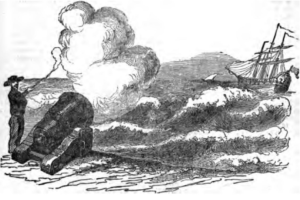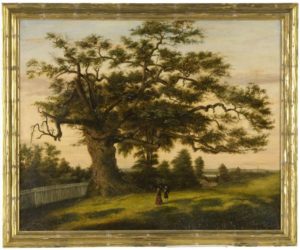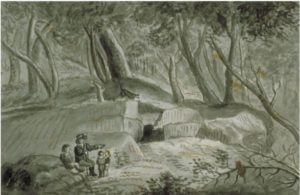FUNDING CUTS IMPACT CT HUMANITIES: Help CT Humanities navigate recent funding cuts and continue our vital work across Connecticut. All donations made to CTH will be matched dollar-for-dollar up to $50,000. Donate today!
Now Viewing:
Folklore

New England Society for Psychic Research: Connecticut Paranormal Investigators Leave Legacy of the Occult
A fascination with haunted houses, spirits, and demonology led Ed and Lorraine Warren to establish the New England Society for Psychic Research (NESPR) in 1952.
Read
Abigail Hinman: Heroine of the American Revolution or Legend?
Allegedly defending her house during the American Revolution in 1781, New London resident Abigail Hinman made a name for herself as a patriot legend.
Read
Oniontown: How Hard Work, Tall Tales, and Red Onions Built Wethersfield
Until the 19th century, the red onion trade supported Wethersfield as the first commercial town along the Connecticut River.
Read
Connecticut’s Sleepy Hollow
Was Washington Irving’s famous schoolmaster, Ichabod Crane, modeled after a man who once called Milford home?
Read
The Old Leatherman Alive in Our Memories
This enigmatic, solitary figure has captured the public imagination since the mid-1800s when he began walking a 365-mile interstate loop over and over again.
Read
The Surprising Prevalence of Earthquake Activity in Connecticut
Connecticut has experienced thousands of earthquakes since European settled the area, the most active site being the village of Moodus in East Haddam.
Read
The Charter Oak Fell – Today in History: August 21
On August 21, 1856, the Charter Oak, a noted landmark and symbol of Hartford and Connecticut, fell during a severe wind and rain storm.
Read
Bridge Ornaments Help Tell the Legend of the Windham Frog Fight
One June night in 1754, Windham residents awoke to a dreadful sound, the source of which has inspired tall tales ever since.
Read
Israel Putnam: A Youthful Trailblazer Turned Colonial Militiaman
Israel Putnam served with distinction in the Seven Years’ War and in the Revolutionary War, particularly at the Battle of Bunker Hill.
Read
The Ghost Ship of New Haven Sets Sail Shrouded in Mystery
Tales of a spectral ship seen sailing in the skies above New Haven have haunted Connecticut’s imagination since the late 1640s.
Read
Hiding the Charter: Images of Joseph Wadsworth’s Legendary Action
Overshadowed by the famed oak, Joseph Wadsworth, “the hero of the Charter,” has become the Rodney Dangerfield of Connecticut history—he doesn’t get any respect—or much recognition.
Read
Witchcraft in Connecticut
Well before the Salem trials, Connecticut residents were executing “witches.” Connecticut is home to what was most likely the first execution of its kind in colonial America.
Read
Connecticut’s Chickamauga Tree: An Investigation
The Connecticut State Capitol displays part of a tree with a cannonball lodged in it. While it is believed to be a remnant of the battle at Chickamauga Creek during the Civil War, evidence exists suggesting the artifact may have been fabricated for the purpose of commercial sale.
Read
Dark Day – Today in History: May 19
On May 19, 1780, a strange darkness fell over much of New England. The darkness that enveloped Connecticut remained there for a day and a half.
Read
Leatherman Dies – Today in History: March 20
On March 20, 1889, the Old Leatherman, so called for the clothing that he fashioned for himself, is thought to have died.
Read
The Legend of the Charter Oak
The Charter Oak is a symbol of Connecticut’s enduring tradition of representative government and self-rule.
Read
The Last Wolf in Connecticut
There are many versions of the story of Israel Putnam and the wolf, but the original is found in a book first published in 1788 while Putnam was still alive.
ReadMore Articles




